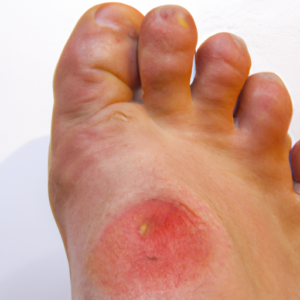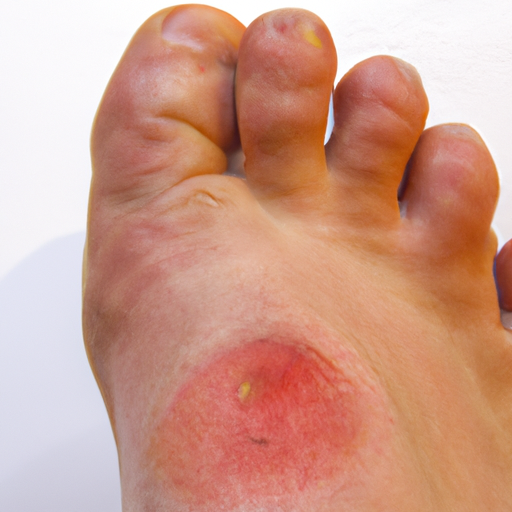Oh, Fungus! How Antifungal Creams Can Help Treat Tinea
Let me introduce you to Tinea, a common skin infection caused by different types of fungi. It usually affects the feet, hands, scalp, and other areas of the body where moisture and warmth are high. This pesky issue can be a real pain, but fortunately, antifungal creams are a reliable treatment option that can get rid of Tinea in no time! In this blog, we’ll explore what Tinea is, the benefits of using antifungal creams, and the different types of creams available.
What is Tinea?
Hey there, it’s time to talk about Tinea – a fungal infection that can affect your skin, scalp, or nails. It’s caused by various species of fungus and can spread through contact with infected skin, clothing, or surfaces. If you’ve ever heard of athlete’s foot, ringworm, or jock itch, those are all types of Tinea.
The symptoms vary depending on the affected area, but common signs include itchiness, redness, scaling, and blistering. It’s important to note that Tinea can be easily diagnosed by a healthcare provider, and treatment typically involves the use of antifungal creams.
Now, you may be wondering how you can contract Tinea in the first place. Well, it thrives in warm and moist areas, so sweaty socks, communal showers, and tight clothing are all breeding grounds for the fungus. People who share equipment or engage in close physical contact are also at a higher risk of contracting Tinea.
Why Antifungal Creams are a Game Changer for Tinea
Let me tell you, dealing with tinea can be downright frustrating. The itching, the burning, and the embarrassment can all be overwhelming. But fear not, my friend! Antifungal creams are here to rescue us. Not only do they alleviate the symptoms, but they also target the root cause of tinea – the fungus itself.
Here are some of the benefits of using antifungal creams:

Firstly, they are convenient. Antifungal creams are topical and easy to use. Most of them come with an applicator, making it easy to apply the cream directly to the affected area. No need to swallow pills or undergo injections.
Secondly, they are effective. Antifungal creams work by killing the fungus that causes tinea. When used as directed, they can clear up the infection within a matter of weeks. Plus, they can prevent the fungus from spreading to other parts of the body or to other people.
Thirdly, they are affordable. Antifungal creams are available over the counter (OTC) and can be purchased at your local drugstore. They are also covered by most insurance plans if prescribed by a doctor. Compared to other treatments, antifungal creams are a budget-friendly option.
Lastly, they are safe. Antifungal creams have a low risk of side effects and are generally well-tolerated. As long as you use them as directed and follow the precautions, you can use them confidently.
So, don’t suffer in silence. Tinea may be a nuisance, but antifungal creams can make all the difference. Try them out and see how your skin can be transformed from itchy and uncomfortable to smooth and healthy.
Types of Antifungal Creams: The Lowdown
There are two main types of antifungal creams: over-the-counter (OTC) and prescription. The first option is easy to get and you don’t need a doctor’s prescription. OTC creams may be less powerful than their prescription-strength counterparts, but they often still work well for mild cases of tinea.
On the other hand, prescription antifungal creams are typically more potent and reserved for more severe cases or if you’ve tried and failed with an OTC cream. Your doctor will prescribe the cream and give you instructions on how to use it. These creams usually cost more and may have more side effects.
5. These Antifungal Creams Can Blast Tinea Away:
After some research and personal experience, I am convinced that not all antifungal creams are created equal when it comes to treating tinea. Some may work for athlete’s foot, but not for jock itch or ringworm. That’s why I want to share with you the most effective antifungal creams for tinea specifically.
First up is terbinafine, which is available as an OTC and prescription cream. This one is great for treating ringworm because it can eliminate the fungus in just a week. I’ve seen it work wonders on stubborn cases.
Next is clotrimazole, which is another OTC option. This cream is ideal for tinea on the skin because it is gentle and can be used on sensitive areas. It’s also effective in preventing tinea from spreading.
Miconazole is another OTC cream that works well for tinea on the skin. This cream can also treat other fungal infections like athlete’s foot and yeast infections. It can take a bit longer to work, but it’s worth it for the relief it brings.
Finally, there’s tolnaftate, which is perhaps the most commonly known antifungal cream. It’s often used for athlete’s foot, but it can work for tinea on the skin too. Just make sure to use it consistently for a few weeks.
No matter which antifungal cream you choose, make sure to follow the instructions carefully and continue using it for the recommended amount of time. Don’t give up if you don’t see results right away. And always remember to keep the affected area clean and dry.
Using Antifungal Creams: A Step-by-Step Guide
Okay, so you’ve got yourself an antifungal cream to treat your tinea. But what now? Here’s a simple step-by-step guide on how to properly use antifungal creams.
Step 1: Clean the affected area
Before applying any cream, make sure to clean the affected area. Use soap and water to gently wash and pat dry the skin.
Step 2: Apply the cream
Take a pea-sized amount of antifungal cream and apply it to the affected area. Make sure to spread it evenly and cover the entire area.
Step 3: Rub it in
Gently rub the cream into the skin until it is fully absorbed.
Step 4: Clean your hands
Wash your hands thoroughly with soap and water after applying the antifungal cream.
Step 5: Repeat the process
Depending on the type of antifungal cream prescribed by your doctor, you may need to apply it once or twice a day for several weeks. Make sure to follow the instructions carefully and complete the full course of treatment.
Remember, using antifungal creams can take time and patience, but sticking to your treatment plan can help effectively get rid of tinea. If you have any concerns or experience any side effects, consult your doctor.
Watch Out for These Side Effects and Precautions When Using Antifungal Creams
It is important to be aware of the potential side effects and precautions when using antifungal creams for tinea. As with any medication, there is the possibility of adverse reactions and interactions with other drugs. It’s crucial to consult with your healthcare provider before starting any new medication, especially if you are taking other prescription drugs or have underlying medical conditions.
Some common side effects of antifungal creams include skin irritation, redness, itching, and burning. In rare cases, serious allergic reactions can occur, including hives, difficulty breathing, and swelling of the face, lips, tongue, or throat. If you experience any of these symptoms, seek medical attention immediately.
Another important precaution when using antifungal creams is to follow the instructions carefully and not to overuse the medication. Some people may be tempted to continue using the cream even after their symptoms have cleared up, but this can lead to resistance and recurrence of the infection.
It’s also important to avoid using antifungal creams on broken or irritated skin, as this can increase the risk of side effects and slow down the healing process. If you have any concerns about using antifungal creams, talk to your doctor or pharmacist before use.
Finally, pregnant or breastfeeding women should be cautious when using antifungal creams and seek advice from their healthcare provider first. Some antifungal medications may have potential risks to the developing fetus or nursing baby, so it’s important to weigh the benefits and risks before use.
8. We Need to Wrap This Up
So now we know that Tinea is a fungal infection that can affect different parts of our body. And to cure it, we can use antifungal creams. These creams work by stopping the growth and spread of the fungi, which eventually leads to its elimination.
Using antifungal creams for Tinea has various benefits. They are easily available over the counter and work by directly targeting the affected area, without causing any side effects on the rest of the body. Additionally, they are simple to apply and can be used conveniently at home.
There are different types of antifungal creams, including prescription and OTC ones. Some of the most effective antifungal creams for Tinea include Terbinafine, Clotrimazole, Miconazole, and Tolnaftate.
But before using antifungal creams, it’s crucial to understand how to apply them correctly and know the possible side effects and precautions. In case of severe infections, it’s always best to consult a healthcare professional to avoid any complications.
So that’s it! If you want to know more about curing Tinea, check out this amazing post on Bright Side Beauty.
